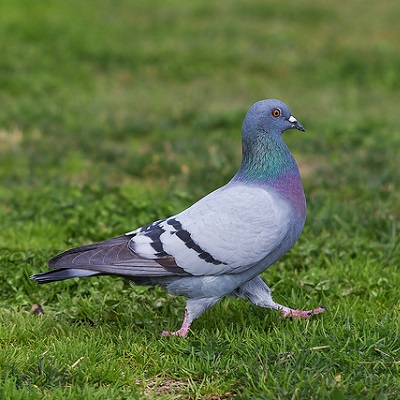Genetic profile of the domestic pigeon Columba livia using genes associated with plumage color in Cotorra-Córdoba, Colombia
DOI:
https://doi.org/10.24054/bistua.v20i2.1430Keywords:
genetic profile, allelic frequencies, gene flow, HeterozygosityAbstract
The objective of the research was to analyze the genetic profile of the domestic pigeon Columba livia using genes associated with plumage color in Cotorra-Córdoba, Colombia. Five subpopulations were sampled, the random samples were developed between January and February 2019, through urban excursions, direct observation and with the help of photographic records. Autosomal markers that encode plumage coloration and pattern were used: Grizzle (G); Spread (S); Checker (C) and Ash-Red (B) linked to sex. Genetic profiles were calculated with the following genetic-population indices: allelic frequencies, genetic diversity, expected heterozygosity, expected heterozygosity of the total population, genetic differentiation coefficient, gene flow, genetic distances between subpopulations, were estimated using the PopGene program. 1.31. The number of alleles per locus and Shannon's index was calculated using the FSTAT v 2.9.3.2 program. A dendrogram was drawn using the MEGA 5.2 program. The Spread and Checker loci were the ones with the highest frequencies, on the contrary Ash-red showed the lowest values, the genetic differentiation was insufficient between the subpopulations and a high gene flow, configuring the same genetic profile for this population of domestic pigeons. Possible advantages of natural selection associated with reproductive performance and physiological improvements are suggested
Downloads
References
Ma et al., «Análisis de ARN largos no codificantes y ARNm asociados con la lactancia en la cosecha de palomas (Columba livia),» Genes, pp. 11 (2), 201. https://doi.org/10.3390/genes11020201, 2020.
M. R. F. G. R. y. C. H. Peñuela, «Inferencia genética transcontinental de poblaciones de palomas urbanas utilizando marcadores fenotípicos,» Avian Biology Research, pp. 12 (4), 152-162. https://doi.org/10.1177%2F1758155919866550, 2019.
R. V. H. H. O. E. J. K. Z. M. E. Y. M. &. S. M. D. Bruders, «A copy number variant is associated with a spectrum of pigmentation patterns in the rock pigeon (Columba livia),» PLoS genetics, pp. 16(5), e1008274. https://doi.org/10.1371/journal.pgen.1008274. https://doi.org/10.1101/792945, 2020.
S. &. C. R. L. Krishnan, «Effects of mutations in pigeon Mc1r implicate an expanded plumage color patterning regulatory network,» bioRxiv, p. 792945., 2019.
L. Soletto, «Estudios de estructura-actividad de la interacción entre el receptor de melanocortinas tipo 4 (MC4R) y las proteínas accesorias de los receptores de melanocortinas (MRAPs) e implicación de las melanocortinas en la regulación de los ritmos circadianos de a,» ([Tesis de Doctorado, Universidad Catolica]. Repositorio Institucional – Universidad Catolica, 2020.
A. C. L. y. C. O. Rodrìguez, «Determinación de la diversidad genética de la paloma doméstica Columba livia (Columbidae) a partir de genes polimórficos asociados con el color del plumaje en San Antero, Córdoba, Colombia,» Revista de la Academia Colombiana de Ciencias Exactas, Físicas y Naturales, pp. 43(166), 78-83. https://doi.org/10.18257/raccefyn.794, 2019.

Additional Files
Published
Issue
Section
License
Copyright (c) 2022 © Autores; Licencia Universidad de Pamplona.

This work is licensed under a Creative Commons Attribution-NonCommercial-NoDerivatives 4.0 International License.
© Autores; Licencia Universidad de Pamplona





